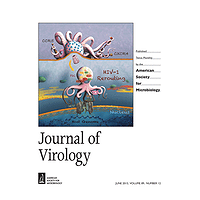Proteins that form the reovirus outer capsid play an active role in the entry of reovirus into host cells. Among these, the sigma1 protein mediates attachment of reovirus particles to host cells via interaction with cell surface glycans or the proteinaceous receptor junctional adhesion molecule A (JAM-A). The mu1 protein functions to penetrate the host cell membrane to allow delivery of the genome-containing viral core particle into the cytoplasm to initiate viral replication. We demonstrate that a reassortant virus that expresses the M2 gene-encoded mu1 protein derived from prototype strain T3D in an otherwise prototype T1L background (T1L/T3DM2) infects cells more efficiently than parental T1L. Unexpectedly, the enhancement in infectivity of T1L/T3DM2 is due to its capacity to attach to cells more efficiently. We present genetic data implicating the central region of mu1 in altering the cell attachment property of reovirus. Our data indicate that the T3D mu1-mediated enhancement in infectivity of T1L is dependent on the function of sigma1 and requires the expression of JAM-A. We also demonstrate that T1L/T3DM2 utilizes JAM-A more efficiently than T1L. These studies revealed a previously unknown relationship between two nonadjacent reovirus outer capsid proteins, sigma1 and mu1.IMPORTANCE: How reovirus attaches to host cells has been extensively characterized. Attachment of reovirus to host cells is mediated by the sigma1 protein, and properties of sigma1 influence the capacity of reovirus to target specific host tissues and produce disease. Here, we present new evidence indicating that the cell attachment properties of sigma1 are influenced by the nature of mu1, a capsid protein that does not physically interact with sigma1. These studies could explain the previously described role for mu1 in influencing reovirus pathogenesis. These studies are also of broader significance because they highlight an example of how genetic reassortment between virus strains could produce phenotypes that are distinct from those of either parent.

Reovirus mu 1 Protein Affects Infectivity by Altering Virus-Receptor Interactions
Review badges
3 pre-pub reviews
0 post-pub reviews

